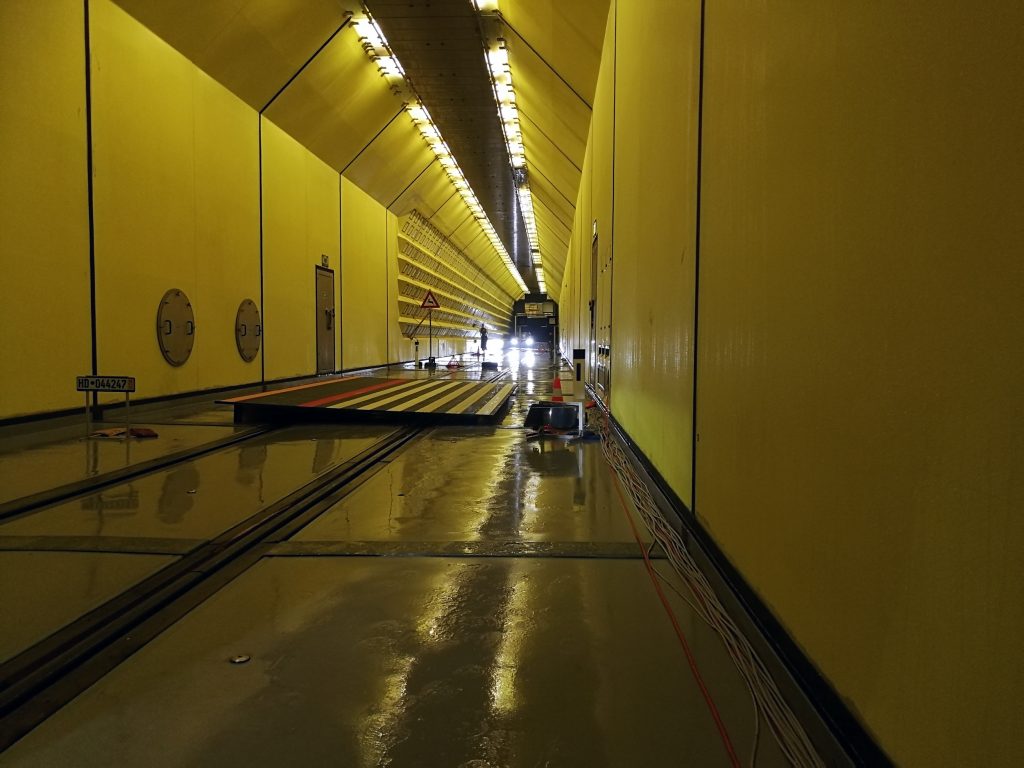Together with ZKW Group, SWARCO Road Marking Systems carried out comprehensive tests involving driver assistance systems in the world’s largest climatic wind tunnel. The tests focused on the detectability of road markings by automated driver assistance systems. The measurements with several LiDAR sensors and cameras specifically targeted road marking recognition under adverse visibility conditions. SWARCO Road Marking Systems’ premium glass beads improved the detection of the road markings for all marking materials used.
28 January 2021 – “Lane markings are often described as the rails for self-steering cars. By using markings with premium glass beads, SWARCO Road Marking Systems creates a world of reliable guidance systems for humans and machines. This has been proven by the tests conducted in the climatic wind channel, and the results are impressive,” explains Harald Mosböck, VP Region Europe/MEA/Africa (Sales/Contracting) at SWARCO Road Marking Systems. The wind channel tests were conducted in the world’s largest climatic wind tunnel, located in Vienna, Austria.
Simulations with Wind, Fog and Rain
The test series was developed as a cooperation between SWARCO Road Marking Systems and ZKW Group. Eight different road marking systems were tested for detectability by LiDAR and camera under various conditions. The tested materials reached retroreflection values between 59 and 648 mcd/m²*lx (RL), and between 35 and 120 mcd/m²*lx in wet conditions (RW). Daytime visibility (Qd) ranged from 109 to 273 mcd/m²*lx. 10 different LiDAR sensors were assessed in a wide variety of conditions, which included wind, fog, rain and glare simulations. The detectability of different colours was also particularly impressive. Even the colour orange, which automated driver assistance systems usually have difficulties detecting, was recognized by the systems effortlessly. “We have identified a massive correlation between retroreflection and the detection of markings by LiDAR sensors. Higher retroreflection enhances detectability by more than 80 percent, irrespective of outside conditions,” Harald Mosböck describes. LiDAR stands for “light detection and ranging” – this technology, which is similar to radar, uses laser beams to measure the position and speed of objects.
High Retroreflection Improves Detectability
Road markings with SWARCO SOLIDPLUS & SWARCO DURALUX premium glass beads achieved the best results, facilitating the detection of lane markings by driver assistance systems regardless of the marking material used. In wet conditions, LiDAR detection dropped significantly, by up to 96 percent compared to optimal conditions. Here, too, marking systems with SWARCO SOLIDPLUS & SWARCO DURALUX premium glass beads yielded markedly better results. Thanks to their excellent retroreflection values, these premium glass beads substantially increase road safety, particularly at night and in foggy or rainy weather. Ambient brightness or glare, however, did not have any significant impact on LiDAR detection. “At any rate, one of the key takeaways from these tests is that LiDAR and cameras complement each other very well when it comes to detecting marking systems reliably, even in the most adverse weather conditions. This increases the reliability of driver assistance systems and improves safety,” Harald Mosböck explains.
About SWARCO Road Marking Systems
Quality products and services from SWARCO Road Marking Systems guide traffic safely from A to B by day and, above all, by night. On all types of roads. Whatever the weather. From a single source. Over 5,000 customers in more than 80 countries place their trust in them.
For further information visit: www.swarco.com/safe-advanced-guidance and www.swarco.com/rms


